Three-Day Oaxaca Itinerary: Culture, Food & History

Why does Oaxaca Mexico deserves at least three days? I’m glad you asked!
With its deep Indigenous roots, world-renowned cuisine, and breathtaking landscapes, it’s a place you’ll want to explore at a slower pace.
A three-day Oaxaca itinerary gives you enough time to experience the city’s highlights while leaving room to soak in its rich culture.
I fell in love with Oaxaca de Juárez during the 2024 Guelaguetza, an annual festival in July that celebrates all of the state’s rich cultural heritage.
This itinerary is designed to help you dive deep into what makes Oaxaca special – centuries-old markets, savouring complex moles, and learning about the artistry behind each handcrafted piece in the region’s artisan villages!
Quick Travel Resources
🛫 WISE – Multi-Currency Debit Card
🛫 REMITLY – International Money Transfer
Oaxaca Itinerary Overview
Day 1: Oaxaca City’s Historic Center, Markets & Mezcal
Day 2: Monte Albán, Artisan Villages & Traditional Cuisine
Day 3: Hierve el Agua, Mitla & Mezcal Distilleries
Discovering Oaxaca: Culture, History & Tradition
Nestled in a valley surrounded by the Sierra Madre mountains, Oaxaca de Juárez is a UNESCO World Heritage site is the heart of Indigenous culture in Mexico.
The Zapotec and Mixtec peoples have shaped its identity for thousands of years, preserving their languages, crafts, and culinary traditions.
This city is a feast for the senses. Markets overflow with handwoven textiles, intricate alebrijes, and rich Oaxacan chocolate.
The region is home to mezcal, a smoky agave spirit, and mole, a complex sauce with layers of deep, earthy flavours. Every dish, artwork, and street performance reflects the soul of Oaxaca.
Monte Albán, the ancient Zapotec city perched above the valley, tells the story of one of Mesoamerica’s greatest civilizations. Meanwhile, artisan villages like Teotitlán del Valle continue centuries-old weaving traditions using natural dyes and ancestral techniques.
Colonization reshaped Oaxaca, but Indigenous communities have maintained their resilience and identity. Today, they lead sustainability efforts, practice milpa farming, and share their artistry with visitors.
Honouring Oaxaca’s legacy means engaging with local artisans, respecting cultural traditions, and supporting Indigenous-run businesses.
Let’s get into this three-day Oaxaca itinerary to take you through the heart of this extraordinary region, ensuring an immersive and responsible travel experience!
Day 1: Oaxaca City’s Historic Center, Markets & Mezcal

Sierra Madre Mountains, Oaxaca
Morning: Arrive & Check into Your Accommodations
After arriving in Oaxaca, settle into your accommodation before heading out to explore.
Here are some great options for every budget:
- Budget: Hostel La Villada Inn – Family-run, with an excellent view of the city.
- Mid-Range: Hotel Casa Oaxaca – A beautiful boutique stay with modern comforts and Oaxacan charm.
- Luxury: Quinta Real Oaxaca – A 16th-century convent transformed into a stunning high-end hotel.
Drop your bags, freshen up, and get ready to immerse yourself in Oaxaca’s historic center!

Photo © Daena Crosby
Late Morning: Explore Oaxaca’s Zócalo & Templo de Santo Domingo
The Zócalo (main square) is the heart of the city, where street musicians, vendors, and locals gather throughout the day. Nearby, the Templo de Santo Domingo is a must-visit.
This ornate Baroque church, built by the Dominicans in the 16th century, houses stunning gold-leaf interiors and intricate altars.
Don’t forget to stop at the Museo de las Culturas de Oaxaca, located within the former convent of Santo Domingo. It features incredible artifacts, including Mixtec treasures from Tomb 7 at Monte Albán.
Afternoon: Dive Into Oaxaca’s Markets & Street Food Scene
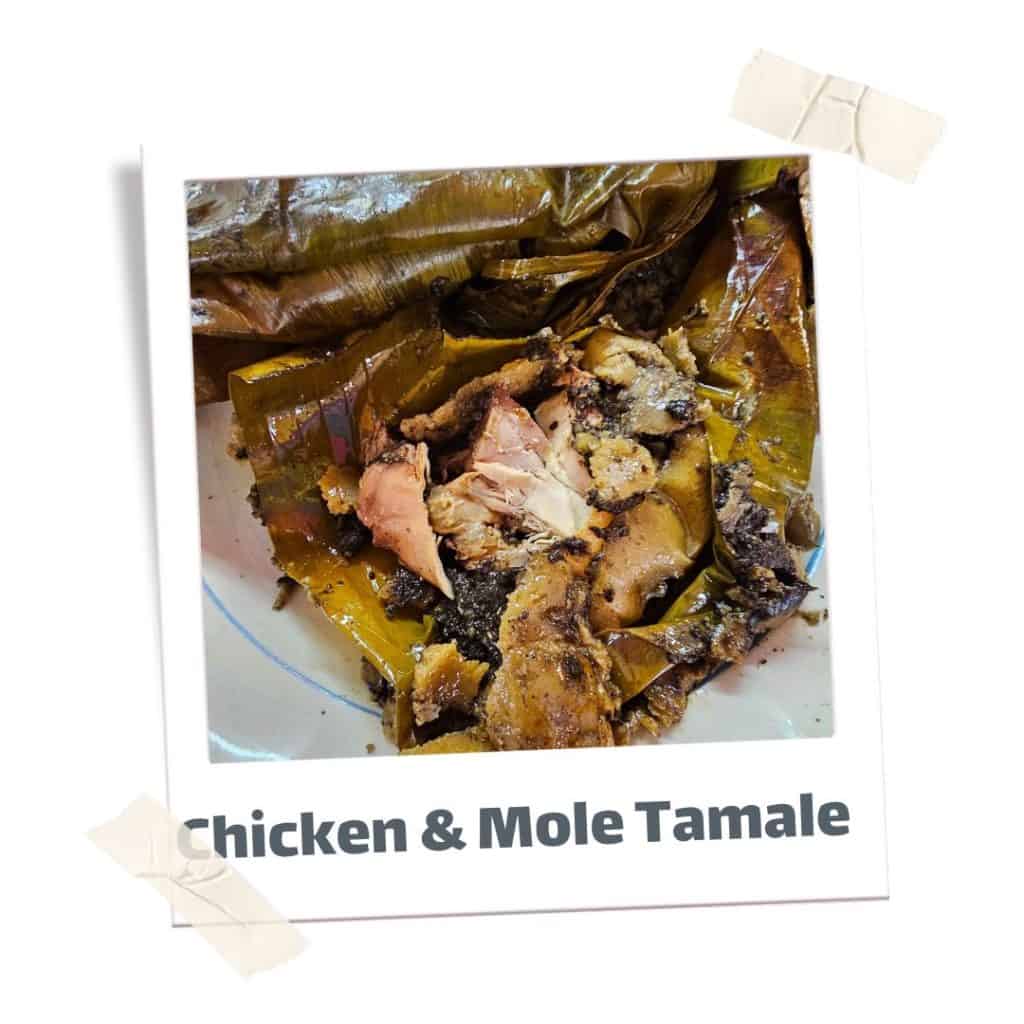
Oaxaca’s markets are a feast for the senses!
Start at Mercado Benito Juárez for handmade textiles, woven baskets, and local chocolate.
Then, head to Mercado 20 de Noviembre, the city’s ultimate food market, for your first real taste of Oaxacan cuisine.
📍20 de Noviembre 512, Benito Juarez, Centro
Must-tries include:
- Tlayudas: Crispy, oversized tortillas with refried beans, cheese, and your choice of meat.
- Mole negro: A rich, smoky sauce made from over 30 ingredients, including chocolate.
- Pasillo de Humo: A corridor of vendors grilling fresh meats – pick your cut and enjoy!
Pro Tip: Pair your meal with tejate, an ancient maize and cacao drink traditionally made by Zapotec women.
Evening: Mezcal Tasting & Rooftop Cocktails
Oaxaca is the birthplace of mezcal, a smoky agave-based spirit. Visit a traditional mezcalería to learn about the production process and enjoy a guided tasting:
- Mezcaloteca (For serious or aspiring mezcal enthusiasts)
- Los Amantes Mezcalería (elegant and cozy)
- In Situ Mezcalería (180+ mezcal varieties)
For an evening drink with a view, head to Casa Oaxaca’s rooftop or Terraza los Amantes for a cocktail and stunning city views.
Day 2: Monte Albán, Artisan Villages & Traditional Cuisine

Monte Albán, Oaxaca
Photo © Daena Crosby
Morning: Explore the Ancient Zapotec City of Monte Albán
No trip to Oaxaca is complete without visiting Monte Albán, a UNESCO World Heritage Site and one of Mesoamerica’s most important archaeological sites.
Located just 20 minutes from the city, this ancient Zapotec city features:
- Grand plazas and ceremonial temples
- Carved stone monuments known as Danzantes
- Stunning panoramic views of the Oaxacan valley
Getting There: Take a colectivo (shared taxi), a guided tour, or an inexpensive shuttle from the city center.
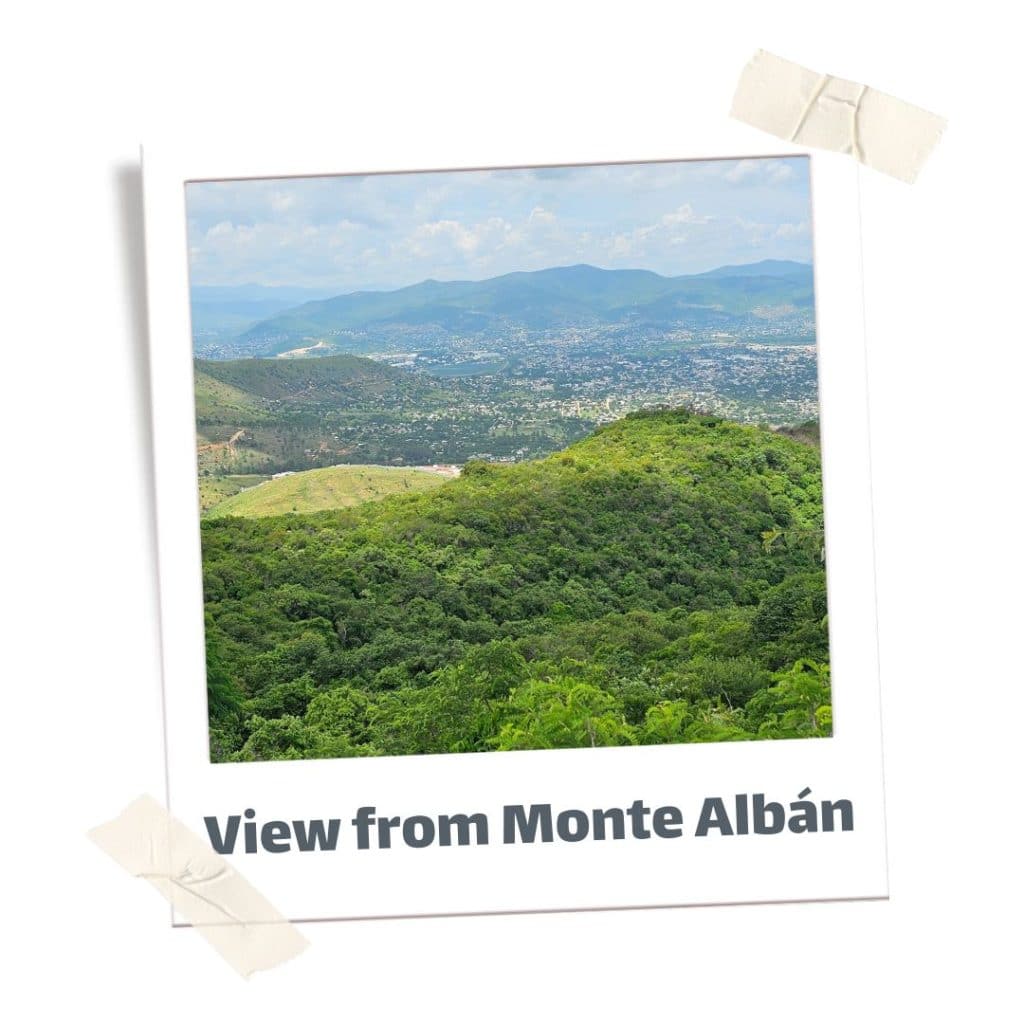
Photo © Daena Crosby
Afternoon: Visit Teotitlán del Valle & the Art of Zapotec Weaving
Next, head to Teotitlán del Valle, a Zapotec village famous for its woven rugs. Artisans here use natural dyes –made from plants, insects, and minerals –to create intricate patterns that tell stories of their ancestors.
Visit a family-run workshop to see the weaving process in action and purchase a handmade piece directly from the artist.
Pro Tip: If you’re hungry, stop for a homemade meal at Tlamanalli, a Zapotec-women run restaurant serving heirloom corn tortillas and traditional stews.
📍 70420 Teotitlán del Valle, Tlacolula, 70420 Oaxaca, Oax.
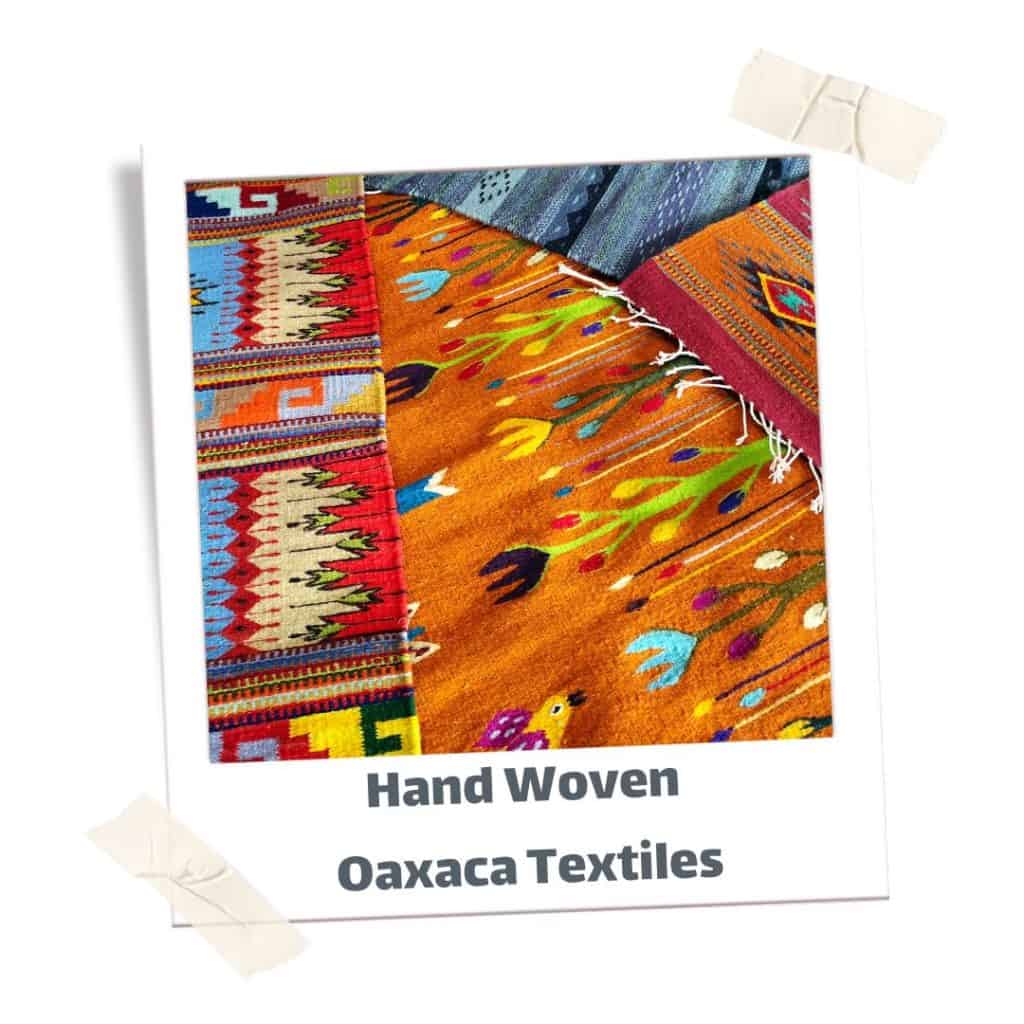
Evening: A Traditional Oaxacan Dinner
For a truly authentic meal, book a table at Casa Oaxaca or Los Danzantes, where you can enjoy Oaxacan cuisine with a contemporary twist.
Try the chile relleno de picadillo con nogada (stuffed chile with walnut sauce) or duck with mole coloradito.
Other Cultural & Culinary Must-Visit Spots in Oaxaca de Juárez
Oaxaca de Juárez is a city rich in history, art, and gastronomy. Beyond its famous markets and archaeological wonders, there are several cultural institutions and street food hotspots that offer an even deeper understanding of Oaxaca’s diverse heritage.
Whether you’re drawn to museums, botanical gardens, or local food markets, these spots deserve a place on your itinerary.
Top Cultural Landmarks & Museums in Oaxaca
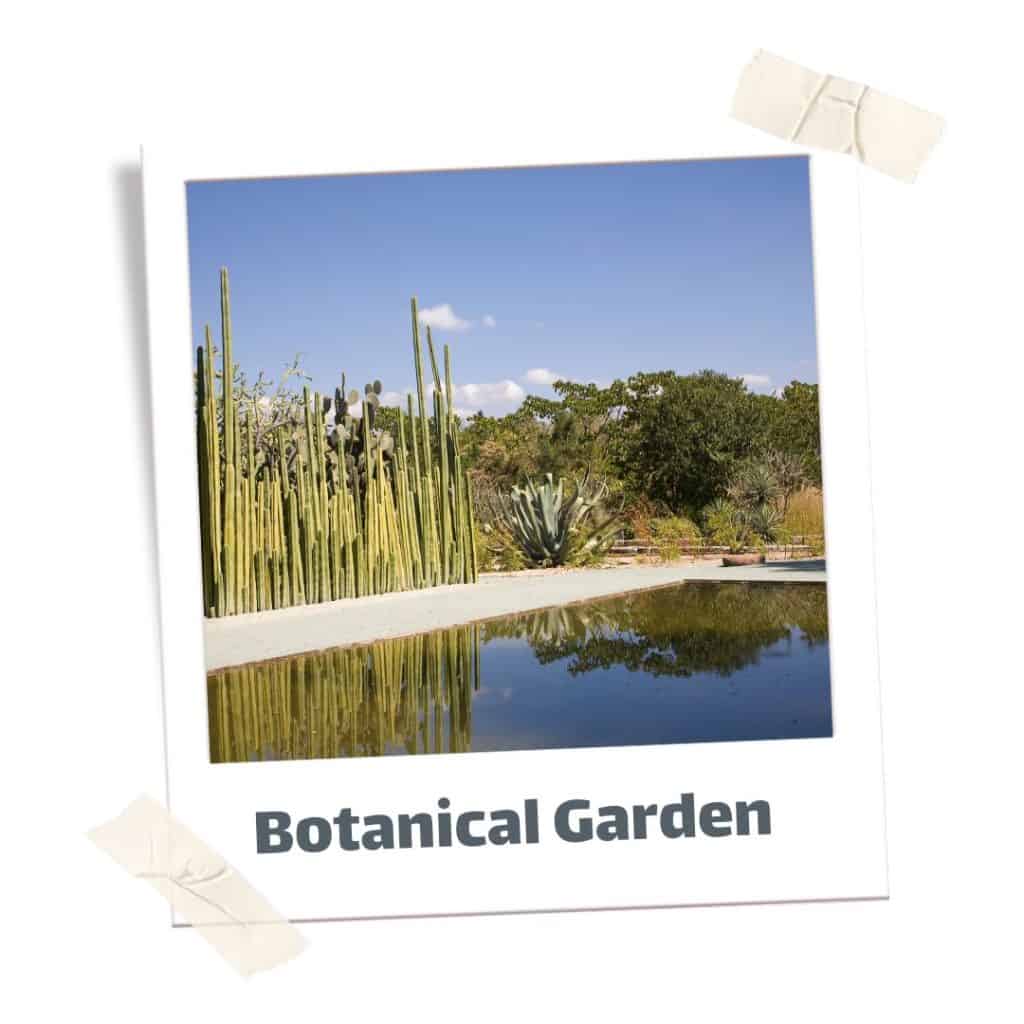
📍 Jardín Etnobotánico de Oaxaca (Oaxaca Botanical Garden)
A living museum of Oaxaca’s native plant species, this botanical garden is a must-visit for nature lovers.
Located behind the Templo de Santo Domingo, it showcases the region’s rich biodiversity, from towering cacti to medicinal plants used in Indigenous traditions.
Why Visit?
✔️ Features plants unique to Oaxaca’s diverse ecosystems
✔️ Guided tours provide insight into the cultural and ecological significance of each species
✔️ A peaceful escape from the city’s bustling streets
Pro Tip: Entry is only allowed with a guide.
Guided Tour Times:
- Monday to Friday: 10:30am, 11am, 11:30, 12pm and 5pm. Saturdays: 10:30am, 11am, 11:30am, 12pm
- There are no reservations or advance ticket sales.
📍 Museo de Arte Contemporáneo de Oaxaca (MACO)
Oaxaca’s contemporary art scene thrives at MACO, housed in a restored colonial mansion on Andador Macedonio Alcalá. The museum highlights modern works by Oaxacan and Mexican artists, often focusing on themes of Indigenous identity, social justice, and the intersection of tradition and innovation.
Why Visit?
✔️ Features works by renowned Oaxacan artists, including Rufino Tamayo
✔️ Thought-provoking exhibitions that explore contemporary Indigenous narratives
✔️ A blend of historic architecture and cutting-edge art
📍 Museo Rufino Tamayo
Dedicated to Mexico’s pre-Hispanic art, this museum presents a unique perspective on Indigenous craftsmanship. Founded by Oaxacan artist Rufino Tamayo, the collection features intricate ceramics, stone carvings, and gold artifacts that tell the stories of Mesoamerican civilizations.
Why Visit?
✔️ Offers an Indigenous perspective on Mexico’s ancient cultures
✔️ Showcases Tamayo’s personal collection of pre-Hispanic artifacts
✔️ The museum’s bold, colourful walls add to its unique aesthetic
📍 Museo de las Culturas de Oaxaca (Museum of Oaxacan Cultures)
Set in the stunning Ex-Convento de Santo Domingo, this museum delves into Oaxaca’s deep cultural history, from pre-Hispanic civilizations to colonial and modern influences. One of its most prized exhibits is the Treasure of Tomb 7, a dazzling collection of Mixtec gold and jewelry discovered at Monte Albán.
Why Visit?
✔️ Home to Oaxaca’s most significant archaeological artifacts
✔️ Housed in a beautifully preserved former convent
✔️ Offers breathtaking views of the city and mountains
Bonus Tip: Pair your museum visit with a walk through the adjacent Jardín Etnobotánico for a full cultural immersion.
Oaxaca’s Must-Try Street Food Spots
Oaxaca’s culinary scene is legendary, and some of the best flavors can be found on the streets. Here’s where to go for an authentic street food experience:
📍 Las Tlayudas de Libres
What to Try: Tlayudas – large, crispy tortillas topped with refried beans, cheese, and meat, then grilled to perfection.
Where: Calle de Los Libres 210, Centro
Why Go: A classic late-night stop for one of Oaxaca’s most iconic dishes.
📍 Plaza de la Danza (Evening Street Food Scene)
What to Try: Esquites (seasoned corn in a cup) & elotes (grilled corn with toppings).
Where: C. 2 de Abril, Calzada Madero, Centro
Why Go: A lively, open-air setting with locals enjoying traditional Oaxacan snacks.
📍 Tlacolula Sunday Market
What to Try: Barbacoa tacos, tamales, & chocolate atole.
Where: Tlacolula de Matamoros (45 min from Oaxaca City)
Why Go: A market day experience with a deep connection to Zapotec traditions.
Day 3: Hierve el Agua, Mitla & Mezcal Distilleries
Morning: Take in the Magic of Hierve el Agua
Start your day early with a trip to Hierve el Agua, a natural wonder featuring petrified waterfalls and mineral-rich infinity pools.
Swim in the turquoise pools while overlooking the breathtaking mountain landscape.
Getting There:
- Join a guided tour (many include Mitla and a mezcalería stop!)
- Take a colectivo from Oaxaca City to Mitla, then another from Mitla to Hierve el Agua
- Rent a car for more flexibility
Pro Tip: Visit early to beat the crowds and experience the most stunning sunrise views.

Hierve el Agua, Oaxaca
Photo © Daena Crosby
Afternoon: Explore the Ruins of Mitla
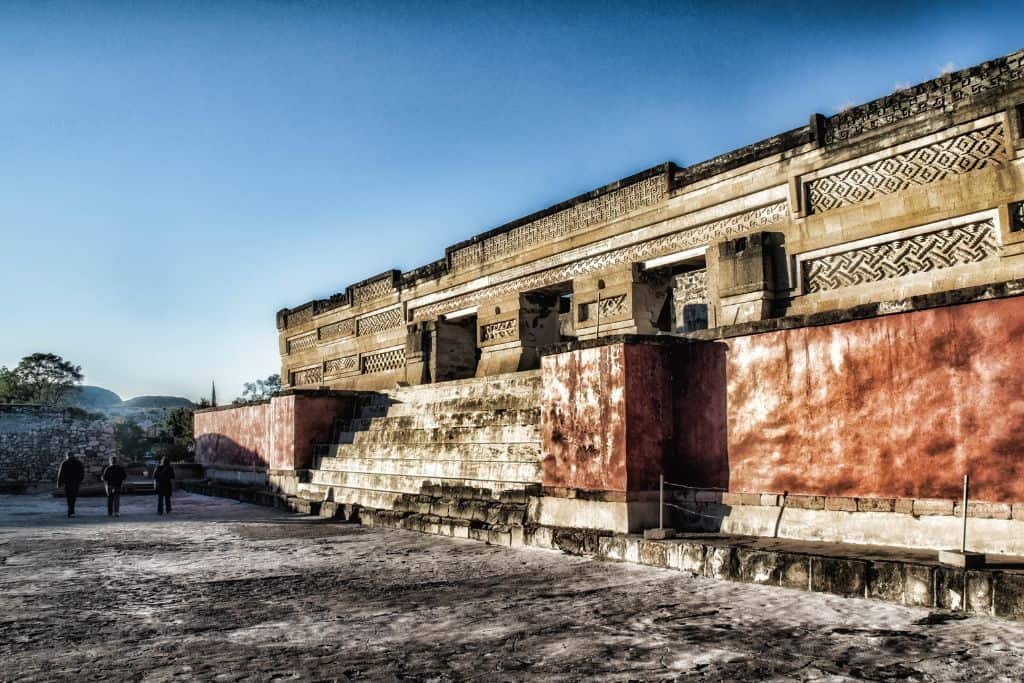
Mitla, “Place of the Dead”, Oaxaca
On your way back, stop at Mitla, another fascinating Zapotec site. Unlike Monte Albán, Mitla is known for its intricate geometric mosaics, reflecting Zapotec spiritual beliefs about the afterlife. The craftsmanship here is truly awe-inspiring.
Final Stop: Mezcal Distillery Tour in Santiago Matatlán

Mitla, Oaxaca
Photo © Daena Crosby
Before heading back to Oaxaca City, visit a mezcal distillery in Santiago Matatlán, known as the world capital of mezcal. Some of the best palenques (mezcal distilleries) to visit include:
- Casa Don Tacho – Family-owned, with a deep respect for traditional production.
- El Rey de Matatlán – Known for its approachable tastings and scenic agave fields.
- Los Amantes – A premium experience with a focus on sustainability.
Don’t Miss El Árbol del Tule: A Sacred Natural Wonder

Árbol del Tule | Tree of Tule – Oaxaca
Photo © Daena Crosby
Just outside Oaxaca City, in the small town of Santa María del Tule, stands one of the most extraordinary natural landmarks in Mexico – El Árbol del Tule.
This Montezuma cypress is renowned for its massive trunk circumference, earning it a place among the widest trees in the world.
More than just a botanical marvel, the tree is deeply woven into the spiritual and cultural identity of Oaxaca’s Indigenous communities, symbolizing strength, longevity, and the interconnectedness of life.
Why Visit El Árbol del Tule?
✔️ One of the widest trees in the world—over 2,000 years old and still growing!
✔️ Sacred to Indigenous Zapotec communities, who believe it embodies resilience and wisdom.
✔️ Located in a peaceful town square, making it an easy and relaxing stop.
✔️ Beautiful colonial church nearby, offering a unique contrast between natural and historical landmarks.
How to Get There
📍 Santa María del Tule, Oaxaca
🛻 Distance: 45 minutes from Mitla | 20 minutes from Oaxaca City
🚖 Transportation Options:
- Take a colectivo (shared van) from Mitla or Oaxaca City.
- Hire a taxi for a direct trip.
- Rent a car and explore at your own pace.
Pro Tip: Tule is often included in guided tours of Mitla and mezcal distilleries, making it a convenient add-on to your itinerary.
What to Do at El Árbol del Tule
🌳 Marvel at the Ancient Cypress
Walk around the tree’s thick, gnarled roots and take in the sheer scale of its over 14-meter diameter trunk. Local guides offer fascinating insights into its age-old legends, including stories of sacred animals hidden within its patterns.
⛪ Visit the Church of Santa María del Tule
This picturesque 18th-century church, standing just beside the tree, is a peaceful place to admire colonial architecture and reflect on Oaxaca’s blend of Indigenous and Spanish influences.
🍦 Try Traditional Oaxacan Nieve
A visit to Tule wouldn’t be complete without a nieve, Oaxaca’s famous handmade ice cream. Vendors sell flavors like tuna (prickly pear), leche quemada (burnt milk), and mezcal, offering the perfect sweet treat to enjoy in the town square.
🛍️ Explore the Artisan Market
Local craft stalls surround the tree’s entrance, where you’ll find handmade woven baskets, embroidered textiles, and alebrijes (colorful folk-art sculptures). It’s a great spot to pick up a unique souvenir while supporting local artisans.
Know Before You Go
Entry Fee: 50 MXN (2024 price) for closer access inside the gated area.
Best Time to Visit: Early morning or late afternoon for cooler weather and fewer crowds.
Photography Tip: Capture the contrast between the massive tree and the small church for a stunning perspective.
Leaving Oaxaca: What You’ll Love, Miss and Want to Come Back For
Oaxaca is a place that rewards slow travel. While three days is enough to experience its highlights, you’ll undoubtedly leave wanting more.
Whether it’s the ruins of Monte Albán, the vibrant energy of the markets, or the smoky richness of mezcal, this city has a way of pulling you back.
Pro Tip: If you can extend your stay, consider visiting the Oaxacan coast (Puerto Escondido or Mazunte) or exploring more artisan villages in the valley.
No matter how long you stay, travel with an open heart, support local communities, and let Oaxaca’s magic unfold before you.
¡Buen viaje!
✨Keep Exploring Mexico Magic✨
👉✨ 7-Day Ultimate Mexico Itinerary: From Mexico City to Oaxaca
👉✨ 3 Days in Oaxaca: The Best Things to Do for First Timers in 2025
👉✨ Sayulita Hidden Gems: Local Businesses You’ll Love to Support
